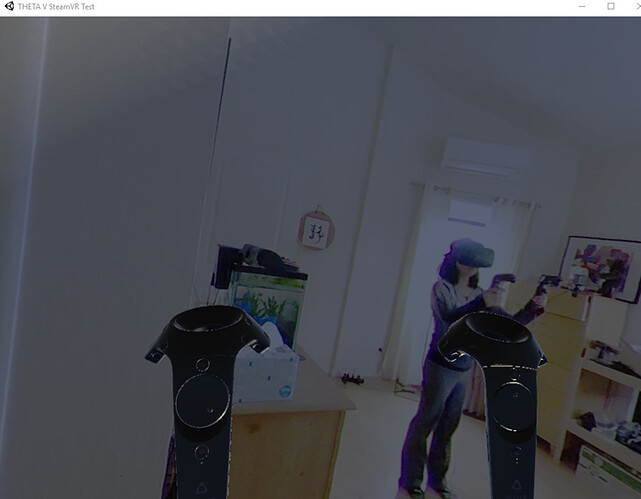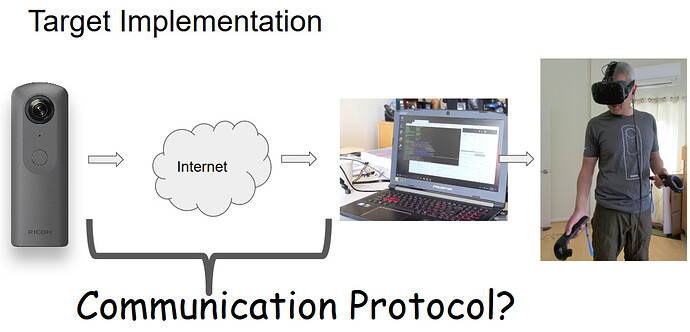Question 1: Matching height of telepresence world with physical world
I’m using HTC Vive with the THETA V for telepresence. Is there a recommended height for the physical THETA V camera and the corresponding position of the SteamVR virtual camera rig inside of Unity?
Right now, I’m getting motion sickness because the virtual ground in the headset does not match up with the real ground under my feet. If the headset is at a physical height of 170cm, should I physically put the THETA V at 170cm on a tripod?
Question 2: Transmitting THETA V live video stream over network IP
I would like to display the THETA V connected to one Windows 10 computer to another Windows 10 computer that has a HTC Vive connected to it. Has anyone successfully done this? I’m thinking of testing a USB or IP solution.
These are the ones that I’ve found for possible testing:
Please advise if you’ve tested one of these or have had any success with any other solution.
In the setup I envision, I am planning to test two high-powered Windows 10 machines and GigE connected to a hub, so the hardware of the transmitting and receiving machines should be okay. I’m skeptical that I can push a 4K video stream over the network, but may try it.









